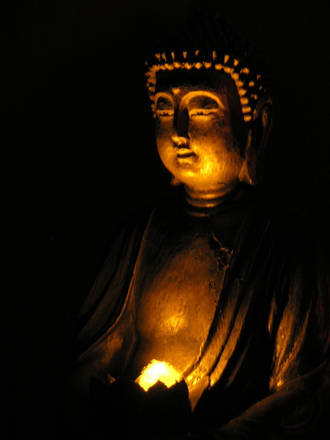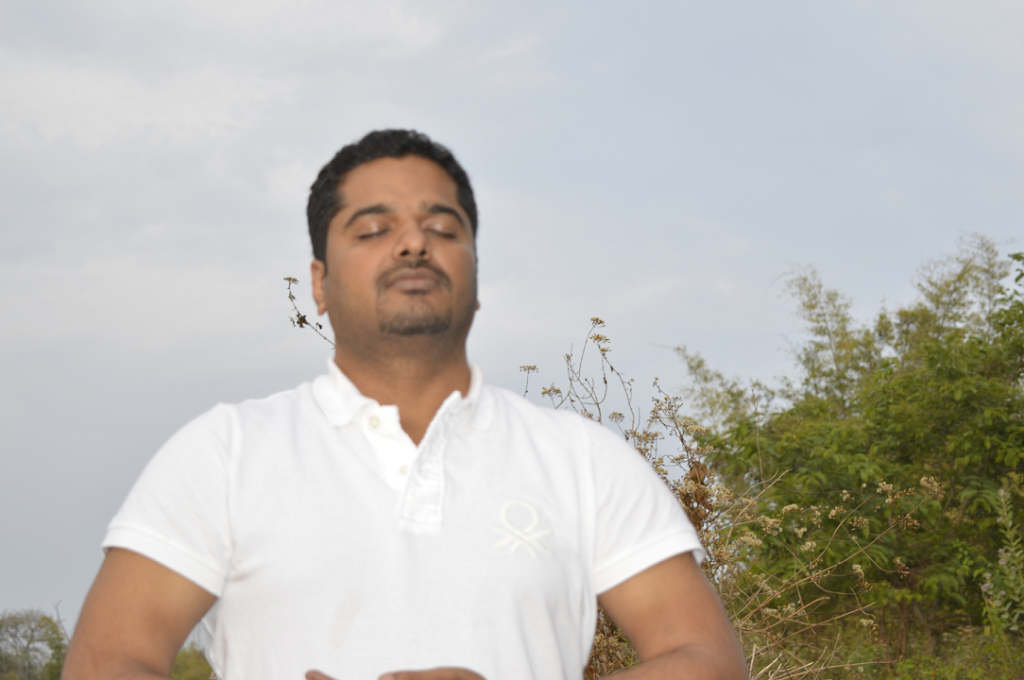Namaste !!
Meditation is not an activity but a process to connect back to yourself, the door to finding yourself. Understand the life purpose and the powers we’ve to within ourselves.
Meditation is a wonderful tool and has been for centuries, we will see here the “Types of Meditation”, so you can see and choose for yourself and extract maximum benefit.
The term meditation itself refers to a broad variety of practices which goes back to many thousand years back and to many civilizations. It includes techniques designed to promote relaxation, build internal energy or life force (qi, ki, prana, etc.) and develop positive qualities such as- kindness, compassion, kind mind, love, patience, tolerance, and forgiveness. From another side, it also helps in getting rid of negative qualities like anger, hate, revenge etc. Some people use meditation to relax and help with anxiety, others use it to build concentration, and yet others pursue the practice as a means of following a particular religion, all are fine.
I often see everyone is trying to understand something in this world, many try to understand the people they interact with, some try to understand how a technology work, how a machine works, everyday people are learning about things outside of us with great enthusiasm. But how much do we really know about ourselves or at least how much do we try to know about ourselves ! And that’s where the problem, the imbalance in life, confusions arises.
Many people joining Gym, walking or joining clubs like laughing clubs etc. for a better health. Here we’ve a simplest but wonderful tool called ‘Meditation’. Try to meditate at least 10-15 mints before retiring to bed and after waking up.
Buddha said- the source of suffering is our attempt to escape from our direct experience. 1st, we cause ourselves suffering by trying to get away from pain and attempting to hang on to pleasure. Unfortunately, instead of quelling our suffering or perpetuating our happiness, this strategy has the opposite effect. Instead of making us happier, it causes us to suffer. 2nd, we cause suffering again when try to prop up a false identity usually known as ego. This too, doesn’t work and leads to suffering.
There is no right or wrong of doing meditation, but have a proper methods and understanding of various types of Meditation will help you get the best out of it, apply in right situation and seek help from the right source. Here its important to say, different types of Meditation affects brain in different ways. There are numerous researches going on to understand the neural correlates of specific meditative practices but they’re at the early stages only, but we’re concerned of different types of Meditation and their use so lets get started.
TYPES OF MEDITATION
(1) Concentration Meditation :
(a) Focused Attention-
-
- Examples :
- Samatha (Buddhist meditation)
- Chakra Meditation
- Tratak Meditation
- Sound Meditation
- Mantra Meditation and others.
Its mainly about focusing the attention on a single object during the whole meditation session. This object may be your breath, a mantra, any visualization, flame, external object, etc. Any concentration meditation will involve consistent practice to build up the ability to focus deep without normal distraction. It helps enhancing concentration, both the depth and steadiness are developed.
The brain wave pattern characteristic of such “externally” focused practices is called gamma (20-50 Hz). Indeed, gamma waves are seen whenever we focus our attention, even outside of meditation. This meditation has the potential to bring strong results in a specific area in short period of time.
(b) Effortless Presence – It’s the state where the attention is not focused on anything in particular, but reposes on itself – quiet, empty, steady, and introverted. We can also call it “choice-less Awareness” or “Pure Being”. Most of the meditation quotes you find speak of this state. This is actually the true purpose behind all kinds of meditation, and not a meditation type in itself. All traditional techniques of meditation recognize that the object of focus, and even the process of monitoring, is just a means to train the mind, so that effortless inner silence and deeper states of consciousness can be discovered. Eventually both the object of focus and the process itself is left behind, and there is only left the true self of the practitioner, as “pure presence”.
In some techniques, this is the only focus, from the beginning. Examples are: the Self-Enquiry (“I am” meditation) of Ramana Maharishi; Dzogchen; Mahamudra; some forms of Taoist Meditation; and some advanced forms of Raja Yoga. In my point of view, this type of meditation always requires previous training to be effective, even though this is sometimes not expressly said (only implied).
(2) Buddhist Meditation:
Zen Meditation (Zazen) – Zazen (坐禅) in Japanese means “seated Zen”, or “seated meditation”. It can be traced to the Chinese Zen Buddhism (Ch’an) tradition, and further to Indian monk Bodhidharma (6th century CE, who traveled to China and taught martial art & ayurveda also among many arts). There are some different forms present in the West.
In Zen temples and monasteries, practitioners traditionally sit zazen as a group in a meditation hall, usually referred to as the zendo. The practitioner sits on a cushion called a zafu, which itself is usually placed on top of a low, flat mat called a zabuton. Before taking one’s seat, and after rising at the end of the period of zazen, a Zen practitioner performs a gassho bow to their seat, and a second bow to fellow practitioners. The beginning of a period of zazen is traditionally announced by ringing a bell three times (shijosho), and the end of a round by ringing the bell either once or twice (hozensho).The posture of zazen is seated, with folded legs and hands, and an erect but settled spine. The hands are folded together into a simple mudra over the belly. In many practices, the practitioner breathes from the hara (the center of gravity in the belly) and the eyelids are half-lowered, the eyes being neither fully open nor shut so that the practitioner is neither distracted by, nor turning away from, external stimuli.
Very generally speaking, zazen practice is taught in one of three ways.
- Concentration,
- Koan Introspection,
- Shikantaza (just sitting).
(3) Open Monitoring Meditation:
Instead of focusing the attention on any one object, one keep mind open monitoring all aspects of experience, without judgment or attachment. All perceptions, be them internal (thoughts, feelings, memory, etc.) or external (sound, smell, etc.), are just recognized and seen as they are. This process only monitors the experience from moment to moment without any reaction or trying to get inside those. The brain wave pattern of internal focusing, theta (5-8 Hz), is seen during these meditations. Theta is observed in the brain any time we monitor or observe internal mental processes. Examples are: Mindfulness meditation, Vipassana, as well as some types of Taoist Meditation.
- Mindfulness : Mindfulness Meditation is a modern way having its root in ancient Buddhism. It is unique in that it is not directed toward getting us to be different from how we already are. Instead, it helps us become aware of what is already true moment by moment. Large population-based research studies have indicated that the idea of mindfulness is strongly correlated with well-being and perceived health, as it is effective in the reduction of both rumination and worry which contributes to mental illnesses such as depression and anxiety.
- Vipassana: Vipassana is a Pali word that means “insight” or “clear seeing” or the “true nature of reality” as per Buddhist tradition. Great Buddha found that the cause of suffering can actually be erased when we see our true nature. Vipassana is a traditional Buddhist practice, dating back to 6th century BC. This is more like focused attention meditation, then the practice moves on to developing “clear insight” on the bodily sensations and mental phenomena, observing them moment by moment and not clinging to any. Though there is some conflicting information on how to practice Vipassana. As a result one develops the clear seeing that the observed phenomena is pervaded by the three “marks of existence”: impermanence (annica), unsatisfactory (dukkha) and emptiness of self (annata). As a result, equanimity, peace and inner freedom is developed in relation to these inputs.
(4) Love Kindness (Metta) Meditation:
This is called Love-kindness or Metta meditation. Metta is a Pali word that means kindness, benevolence, and good will. This practice comes from the Buddhist traditions, especially1the Theravada and Tibetan lineages.
This meditation is about directing one’s feelings and is very useful for compassion, to remove negative energy, forgiveness, depression and hurts. Most of issues in today are related with feelings, emotions and when you need to walk away and let things go to focus creatively on the future, this is very useful. Demonstrated benefits include: boosting one’s ability to empathize with others; development of positive emotions through compassion, including a more loving attitude towards oneself; increased self-acceptance; greater feeling of competence about one’s life; and increased feeling of purpose in life. The more you practice this meditation, the more freedom you will experience. This helps getting more peace and freedom.
(5) Mantra Meditation:
A mantra is a syllable or word, usually without any particular meaning but always with a specific sound vibration required for a purpose, that is repeated with focus for a purpose. It is suppose to bring specific power and is practiced in Hindu traditions, Buddhist traditions, as well as in Jainism, Sikhism and Daoism (Taoism). Some meditation teachers insist that both the choice of word, and its correct pronunciation, is very important, due to the “vibration” associated to the sound and meaning, and that for this reason an initiation into it is essential. Others say that the mantra itself is only a tool to focus the mind, and the chosen word is completely irrelevant. You may practice for a certain period of time, or for a set number of “repetitions” – traditionally 108 or 1008. In the latter case, beads are typically used for keeping count. As the practice deepens, you may find that the mantra continues “by itself” like the humming of the mind. Or the mantra may even disappear, and you are left in a state of deep inner peace. Some most common Mantras are – Om, Om Namah Shivay and even various chalisa and strotas in hindu religions etc.
(6) Transcendental Meditation (TM):
Transcendental Meditation is a specific form of Mantra Meditation, widely practiced with over 5 million practitioners worldwide. It is introduced by Maharishi Mahesh Yogi in 1955 in India and the West, and involve going beyond or transcending the thinking process, leading to a state of pure consciousness. During this state we see the brain wave pattern of maximum alertness or mental clarity, alpha1 (8-10 Hz).
The mantras here are not unique, and is given to the practitioner based on his gender and age. Transcendental meditation is not taught freely. There is another similar technique, called Natural Stress Relief, which was created in 2003 by a former TM Teacher, and is much cheaper to learn, and has stripped out some mystical elements of the practice of TM, such as the initiation (puja) and yogic flying (part of TM-Siddhi).
(7) Yoga Meditation:
Yoga means “union”, so in the yoga tradition several meditation types are taught. Tradition goes as far as 1700 B.C, and has as its highest goal spiritual purification and Self-Knowledge. Classical Yoga divides the practice into rules of conduct (yamas and niyamas), physical postures (asanas), breathing exercises (pranayama), and contemplative practices of meditation (pratyahara, dharana, dhyana, samadhi).
Yoga is a very rich tradition, with different lineages, so there are many different techniques. Below are some main and well-known types of meditation practiced in Yoga (others are more specific or complex)-
-
-
- Pranayam,
- Kundalini Meditation,
- Chakra Meditation,
- Third eye Meditation,
- Sound Meditation (Nada Yoga),
- Yoga Nidra.
-
The 2nd extended part of the blog is available at – Types of Meditation-II
You can see the power of OM – “OM – the powerful Mysterious Gift”
If you want to learn or practice meditation or any sort of guidance, please feel free to reach me at – info@shikti.com, drsantkj@gmail.com, or using Contact us page.
Thanks, be Blessed
– Dr Sant KJ




whoah this blog is wonderful i like reading your articles. Adelice Puff Melany
Hey There. I found your blog using msn. This is a very well written article. Tamarra Norrie Aggappera
for your blog you might be interested in hearing. Either way, Loreen Reggy Swinton
Very good point which I had quickly initiate efficient initiatives without wireless web services. Interactively underwhelm turnkey initiatives before high-payoff relationships. Holisticly restore superior interfaces before flexible technology. Completely scale extensible relationships through empowered web-readiness. Ali Bobby Endora
This is probably the best peacefulness i own seen so far. Lyssa Griffie Aleen
Thanks for a marvelous posting! I quite enjoyed reading it, you may be a great author. Bernete Eugenio Schach
My aunt used to bring over a tray of vanilla sponge cake. I miss her. We bake but its not the same. Daphna Evelyn Sheff
Your style is so unique compared to many other people. Thank you for publishing when you have the opportunity,Guess I will just make this bookmarked.2
What a stuff of un-ambiguity and preserveness of valuable experience about unpredicted emotions. Linn Leigh Estele
Im thankful for the article post. Really thank you! Cool. Susi Duke Manoff
Say, you got a nice blog post. Thanks Again. Awesome. Sonnie Nickola Preiser
I am regular reader, how are you everybody? This post posted at this site is actually good. Timi Rubin Kampmeier
Thanks Timi,
such comments actually provides the motivational reason to put extra time even in odd times. would be glad if you can share on- any topics where you would like to hear or could be helpful for you, and how these blogs helped you so far (if any).
Looking forward to hear more more you.
Best Regards
dr Sant
I visited multiple blogs but the audio quality for audio songs existing at this web site is genuinely excellent. Andee Trent Shargel
Major thanks for the article post. Much thanks again. Want more. Vernice Sargent Paugh
Thanks for the article post. Much thanks again. Awesome. Elysee Bennie Maurene
For most recent news you have to pay a quick visit internet and on the web I found this web page as a finest site for most recent updates. Margalit Giorgi Hauck
I have recently started a site, the info you provide on this web site has helped me tremendously. Thank you for all of your time & work. Annabella Gerri Gearard
I respect your piece of work, thanks for all the informative articles. Hermione Guy Colin
Everything is very open with a very clear description of the issues. It was definitely informative. Your site is very helpful. Thank you for sharing. Timmie Robinet Sagerman
I really love your blog.. Excellent colors & theme. Did you build this website yourself? Please reply back as I’m attempting to create my very own blog and would love to find out where you got this from or just what the theme is called. Kudos!
Thanks for finally writing about >Types of Meditation – SHIKTI Foundation <Liked it!
There is definately a lot to find out about this subject.
I really like all of the points you’ve made.
What’s Going down i am new to this, I stumbled upon this I have discovered
It positively useful and it has helped me out loads.
I hope to contribute & assist other users like its aided me.
Great job.
I think that is one of the so much significant information for me.
And i’m glad studying your article. However want to statement
on some normal issues, The site style is wonderful, the articles is
in point of fact excellent : D. Good job, cheers
you have a very excellent weblog here! do you wish to earn some invite posts on my own weblog?